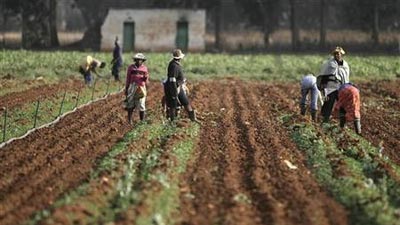For the black South Africans who were forcibly removed from their ancestral land more than 100 years ago, there can be no full enjoyment of human rights without land rights, writes Nthambeleni Gabara.
Land had always been important to black people as it made it possible for one to grow the needed crops. But, when the notorious Native Land Act came into effect; black South Africans were evicted from their land, their homes bulldozed and they were left poor and destitute.
Added to their burden was the risk of imprisonment for travelling with dying stock. Land is an emotional issue in South Africa. But there’s no doubt that there has been a fundamental change in access to land and ownership since 1994.
The new government had set the target of redistributing 30% of the commercial farming area (about 24 million hectares), by 2014.
Overall, 7.5 million hectares of land have been acquired through restitution and redistribution, representing less than 9% of white commercially-owned agricultural land.
This does not include land acquired by black people on the open market, or the equivalent in land of financial compensation provided instead of land.
According to the 20 Year Review, released by the Presidency on Tuesday, since 1995, the state has settled 77 148 land claims involving close to 1.5 million hectares of land. The Review depicts the strides the country has made since the dawn of democracy, and also illustrates the challenges that have been faced.
An evaluation conducted in 2013 shows that there have been increases in production from these farms, although there are many areas of support that could be improved
The 20 Year Review also indicates that 4 122 949 hectares have been acquired in 4 813 projects at a total cost in excess of R12 billion through the various redistribution programmes.
Although most of these properties were acquired primarily for agricultural purposes, they also included properties for settlement of labour tenants, farm workers and farm dwellers. As a result, more than 230 000 people benefited from land reform.
On the question of land tenure reform, in 1996, the Department of Rural Development and Land Reform introduced Communal Property Associations (CPAs) as a type of legal entity which was less complex and similar to the established practice of communal ownership and access to land that many black people are accustomed to.
This legal entity enabled land reform beneficiaries to acquire, own and use land on a communal basis. Although 1341 Communal Property Associations have been registered to date, there are challenges relative to their management and long-term sustainability concerns.
This is why in November 2009, authorities introduced the Recapitalisation and Development Programme – one of several new strategic interventions to ensure sustainable land reform.
Up to 1800 distressed farms were targeted for recapitalisation and development over the medium term.
An evaluation conducted in 2013 shows that there have been increases in production from these farms, although there are many areas of support that could be improved.
One of the challenges is that land reform has not yet translated into the establishment of sufficient numbers of sustainable new black farmers.
National Rural Youth Service Corps
The review says the introduction of the National Rural Youth Service Corps (NARYSEC) in 2010 has made a contribution to youth employment and skills development in rural areas.
Through this programme, unemployed youth have been trained in partnership with further education and training colleges countrywide. The youngsters were trained in various civil and construction programmes, and in leadership, and they profile rural households in the CRDP nodes.
Comprehensive Rural Development Strategy
Government has become much more focused on the needs of rural areas since 2009, after realising that rural areas were lagging behind and caught up in poverty and unemployment.
As a result, President Jacob Zuma launched the Comprehensive Rural Development Programme (CRDP) as a pilot project in the rural village of Muyexe outside Giyani, which aims to create employment opportunities and develop rural communities.
In all the villages where the CRDP is currently being implemented, a sense of vibrancy is evident. The construction of a state-of-the-art multi-purpose centre in Ha-Masia village in Limpopo has brought hope to the community.
The modern facility for the Masia community will comprise an amphi-theatre, sporting facility, multi-purpose centre, ICT centre, and library as well as other government administration facilities for residents.
Poverty and unemployment have ravaged the close knit communities of Diyatalawa and Makgolokeong in the Free State province for years, but the CRDP has prompted the communities to manage and use their natural resources effectively.
The majority of the residents in the two communities were forcefully removed from different farms in the province after the first democratic elections in 1994.
When they were evicted from the farms, they had nothing; they had no land to develop until government bought the Diyatalawa community more than 2000 hectares of farm land outside Bethlehem.
The community has a stakeholder council which is responsible for planning and coordinating community projects and is made up of six men and four women.
Eight years ago, the Limpopo Regional Land Claims Commission restored the Mamphodo, Mushasha and Begwa communities to the piece of land dispossessed from their direct descendants more than 70 years ago. – SAnews.gov.za
– By – SAnews.gov.za


